Essential Oil Inhaler Blend Recipes
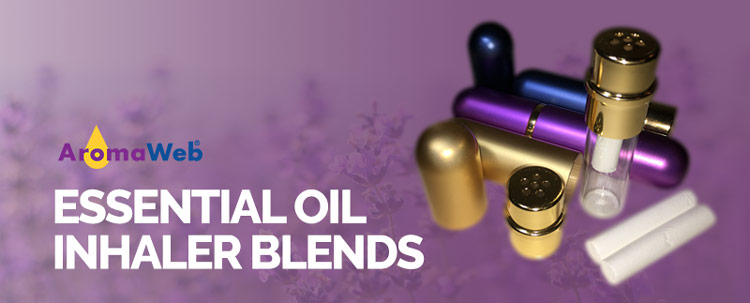
Essential Oil Inhalers are a wonderful way to experience the benefits of essential oils when you are away from home or when you are not able to use a diffuser. They are portable, convenient and discreet. This blending and recipe tutorial explains how to make your own inhaler blends. To learn what inhalers are and to learn more about their specific benefits and challenges, please begin by reading AromaWeb's Guide to Aromatherapy and Essential Oil Inhalers and also AromaWeb's Guide to Eco-Friendly Essential Oil Inhaler Alternatives.
Items Needed
- Inhaler Apparatus
- Label
- Essential Oils for the Blend You Choose Below
- Fractionated Coconut Oil (optional)
- Tiny Bowl
- Pipette
- Tweezers
- Surgical/Exam Gloves (strongly recommended)
Inhaler assemblies for use with your own blends are available for sale through many of AromaWeb's valued advertisers.
Plastic inhalers are usually comprised of four parts: Cover, Wick, Wick Enclosure and Cap. Aluminum inhalers are usually comprised of a glass vial, wick, aluminum screw on top with air holes, outer aluminum enclosure and an aluminum cap.
Suggested Essential Oil Inhaler Blends
In addition to the blends shown below, many aromatherapy diffuser blends can be used as a basis for creating recipes for inhaler blends. Just be sure that you thoroughly familiarize yourself with the safety for each essential oil that you intend to use in your inhaler blend and keep the number of drops to no more than 15 per inhaler.
Focus
- 8 drops Grapefruit Essential Oil
- 4 drops Rosemary Essential Oil
- 3 drops Cypress Essential Oil
Anxiety
- 5 drops Bergamot Essential Oil
- 3 drops Lavender Essential Oil
- 3 drops Petitgrain Essential Oil
- 2 drops Roman Chamomile Essential Oil
- 2 drops Patchouli Essential Oil
Energize
- 4 drops Grapefruit Essential Oil Essential Oil
- 4 drops Lemon Essential Oil
- 4 drops Hemlock Spruce Essential Oil
- 3 drops Peppermint Essential Oil
Insomnia
- 5 drops Lavender Essential Oil
- 4 drops Roman Chamomile Essential Oil
- 4 drops Petitgrain Essential Oil
- 2 drops Vetiver Essential Oil
Nausea
- 8 drops Ginger Essential Oil
- 5 drops Lemon Essential Oil
- 2 drops Cardamom Essential Oil
Expectorant
- 5 drops Eucalyptus Radiata
- 5 drops Fragonia
- 5 drops Hemlock Spruce Essential Oil
Meditation
- 8 drops Frankincense Essential Oil
- 3 drops Vetiver Essential Oil
- 2 drops Atlas Cedar Essential Oil or Spikenard Essential Oil
- 2 drops Rose Otto Essential Oil, Rose Absolute or Rose CO2 Extract - If you are not fond of Rose Otto, select a floral essential oil or CO2 Extract that more closely resonates with you.
Important Safety Comments
Everyone is different. Be sure that you check the safety information for each essential oil to ensure that it is appropriate for your personal use. These blends are offered as possible suggestions for use by adults who are healthy and who have no serious underlying medical issues. For children over six years of age, cut the number of drops in half. Inhaler blends are not recommended for children under six.
Instructions If You Have a Plastic Inhaler Assembly
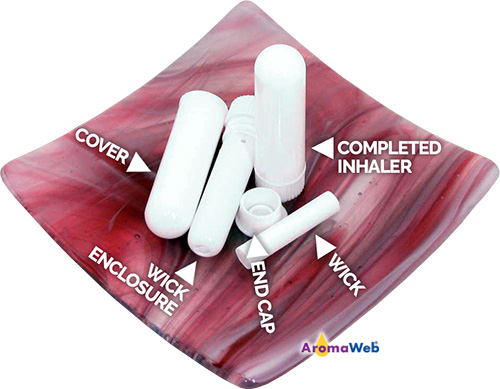
- Put on a pair of surgical/exam gloves (strongly recommended).
- In a tiny bowl, combine the essential oils for your chosen blend.
- If you do not want the inhaler to be intensely aromatic, you can blend approximately 5-15 drops of Fractionated Coconut Oil into your essential oil blend to dilute it. You will need to experiment with the dilution to achieve the aromatic strength that you desire.
- Drop the wick into the bowl.
- Using your tweezers, rotate the wick around so that it fully absorbs the essential oil blend.
- Once all of the essential oil is absorbed, use the tweezers to carefully pick up the wick and drop it into the wick enclosure (it's the part that has a hole at the very top).
- Firmly press the end cap onto the bottom of the wick enclosure.
- Screw the outer cover onto the wick enclosure.
- Add a label to your inhaler.
- Keep the cover on the inhaler anytime that you are not actually using the inhaler.
Some, but not all, plastic inhaler assemblies have caps that have an interior ring on the inside of it that the wick can be inserted into. This interior ring allows you to press the wick into the inside of the cap, allowing you to then set the cap onto a table with the wick standing upright. If you have this type of assembly, you can use a pipette to add your essential oils or blend diluted with fractionated coconut oil, drop-by-drop directly onto one end of the wick and then set the wick enclosure directly onto the cap and press it into place. Even if you have caps that have this interior ring, it doesn't always work effectively if the manufacturer included wicks that are too narrow or too small.
Instructions If You Have an Aluminum Encased Glass Vial Type of Inhaler Assembly
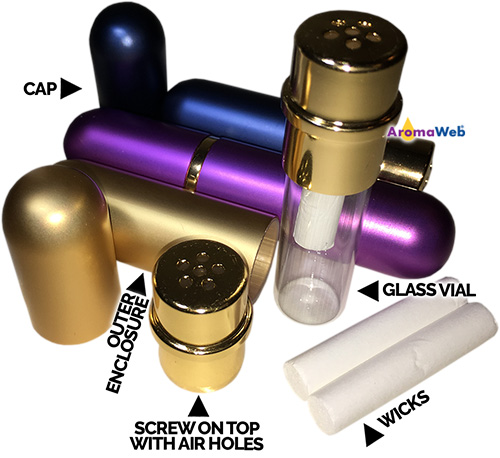
- Put on a pair of surgical/exam gloves (strongly recommended).
- In a tiny bowl, combine the essential oils for your chosen blend.
- If you do not want the inhaler to be intensely aromatic, you can blend approximately 5-15 drops of Fractionated Coconut Oil into your essential oil blend to dilute it. You will need to experiment with the dilution to achieve the aromatic strength that you desire.
- Drop the wick into the bowl.
- Using your tweezers, rotate the wick around so that it fully absorbs the essential oil blend.
- Once all of the essential oil is absorbed, use the tweezers to carefully pick up the wick and insert the wick into the glass vial, leaving a little of the wick sticking out of the glass vial. Depending on the size of the wick, it may require you to use your fingertips to push it into the glass vial opening (be sure you're wearing surgical/exam gloves).
- Screw the metal piece that contains the inhaler holes onto the glass vial.
- Slide the glass vial into the long, outer aluminum enclosure.
- Slide the aluminum cap onto the top of the inhaler.
- Add a label to your inhaler. Removable labels are available, however they can vary in their ability to stay adhered to the surface of the inhaler.
- Keep the cover on the inhaler anytime that you are not actually using the inhaler.
How to Use Your Essential Oil Inhaler
- Remove the cap of your essential oil inhaler.
- Raise it to one nostril, being sure to not allow the tip of the inhaler to come into direct contact with your nose (or other skin).
- Inhale as deeply as is comfortable.
- Repeat with the other nostril.
- Close the cap.
- Immediately discontinue use of your inhaler if you experience any adverse reactions.
General Safety Information
These recipes are offered for educational purposes only. Before using any essential oil, carefully read AromaWeb's Essential Oil Safety Information page. For in-depth information on oil safety issues, read Essential Oil Safety by Robert Tisserand and Rodney Young. Do not take any oils internally and do not apply undiluted essential oils, absolutes, CO2s or other concentrated essences onto the skin without advanced essential oil knowledge or consultation from a qualified aromatherapy practitioner. For general dilution information, read AromaWeb's Guide to Diluting Essential Oils. If you are pregnant, epileptic, have liver damage, have cancer, or have any other medical problem, use oils only under the proper guidance of a qualified aromatherapy practitioner. Use extreme caution when using oils with children and consult a qualified aromatherapy practitioner before using oils with children, the elderly, if you have medical issues or are taking medications.
Do You Need the Ingredients Listed in This Recipe?
You can find the essential oils, other ingredients and packaging that you need by patronizing the fine companies that support AromaWeb with their banner advertising located throughout AromaWeb (See them all at a glance within the Advertiser Spotlight area) and the listings located within the Aromatherapy Business Directory. Many of AromaWeb's advertisers also expertly formulate their own ready-made products if you decide you'd rather not make aromatherapy products yourself.
Do You Want More Essential Oil Recipes and Blends?
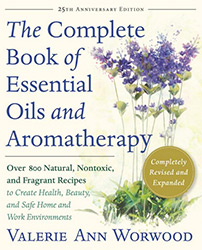
Over 800 Recipes!
The Complete Book Of Essential Oils & Aromatherapy
Author: Valerie Ann Worwood
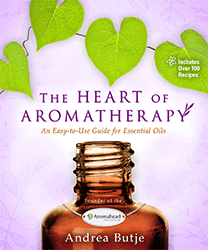
Over 100 Recipes!
The Heart of Aromatherapy
Author: Andrea Butje
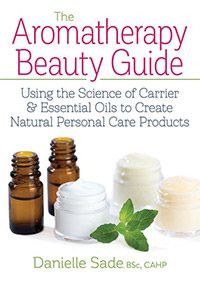
100 Recipes!
The Aromatherapy Beauty Guide
Using the Science of Carrier & Essential Oils to Create Natural Personal Care Products
Author: Danielle Sade, BSc, CAHP
Visit AromaWeb's Books area to find details about many other essential oil and aromatherapy books.
